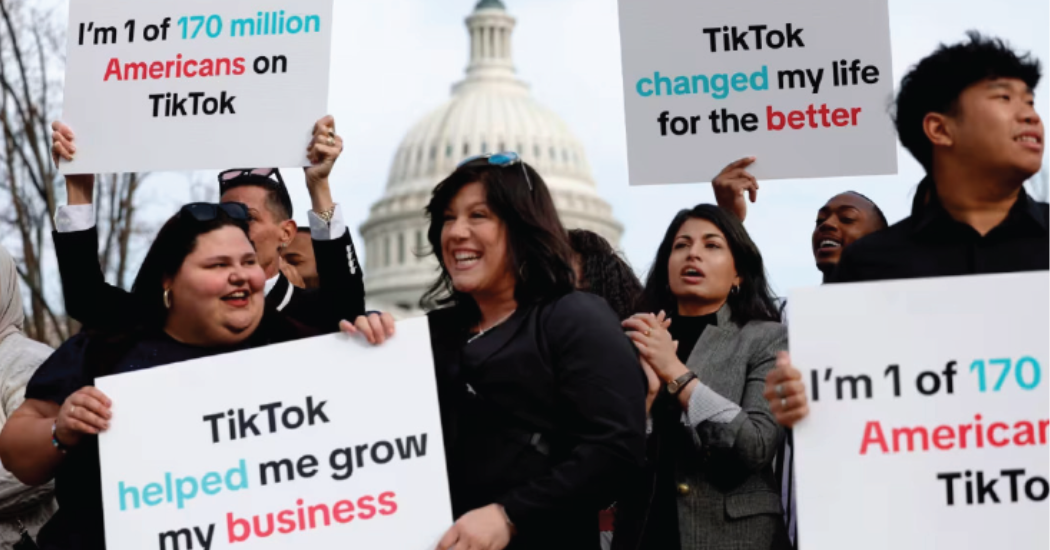TikTok at a Crossroads: The Latest Developments and What It Could Mean for Advertisers

What Happened
After months of speculation, President Joe Biden officially signed a bill on April 23 that puts TikTok’s future on the line. TikTok’s parent company, ByteDance, is now pressured to either sell off its
U.S. operations within a year—with a potential 3-month grace period—or face a ban. This legislative step highlights growing concerns over national security tied to the app’s connections with China through ByteDance.
Why This Is a Big Deal
The implications are monumental—not just for TikTok, but for the tech world at large. With over 170 million U.S. users and 7 million business owners, TikTok is a major player in the social media scene, and its potential removal shakes the very foundation of digital free expression and international tech relations.
It’s also the leading platform for news with adults and younger generation. Based on a study released last November by the Pew Research Center, 14% of adults get their news on TikTok (up from 3% in 2020), and about one-third of U.S. adults under 30 regularly get news from TikTok.
The Core Issues at Stake
First Amendment Challenges: TikTok isn’t going down without a fight. TikTok CEO Shou Chew said the company is gearing up to challenge the bill, claiming it infringes on the First Amendment rights of both TikTok itself and its users. The argument? TikTok claims that the U.S. government unfairly restricts access to an important platform for expression and information. While TikTok emphasizes it has the “facts and the constitution on our side,” this argument is complicated since courts often defer to the government on national security issues, suggesting a tough battle ahead for TikTok.
Complications with Chinese Regulations: Any potential sale of TikTok hinges not just on finding a willing buyer but also on navigating the tricky waters of Chinese export laws, particularly around the technology that powers TikTok’s addictive algorithm. TikTok has said it does not plan to sell, so without the ability to include this tech, the value of what TikTok can offer to a buyer diminishes significantly.
International Relations and Business Implications: The standoff doesn’t stop at corporate sales and legal arguments. This move by the U.S. could strain relations with China, potentially leading to retaliatory measures against American businesses. The tension highlights the complex interplay between international diplomacy and business interests in the global tech arena.
What’s Next for TikTok?
As the clock ticks down, ByteDance must weigh its options carefully, and the question remains. Will it fight the legislation to the end or start the search for a buyer?
While TikTok makes its case in court, users and businesses can still access the app. TikTok promises to keep investing in innovating on the platform in the meantime. “Through our U.S. data security efforts, we have built safeguards that no other peer company has made. We have invested billions of dollars to secure your data and to keep our platform free from outside manipulation.”
Summing It Up
TikTok is at a crucial crossroads, facing not only legal challenges within the U.S. but also potential conflicts with Chinese authorities and significant impacts on global tech policy. How this saga unfolds could reshape the landscape of international tech and trade, setting precedents for how companies with foreign ties are treated under U.S. law.
What this Means for Brands
If the U.S. does in fact ban TikTok 9-12 months from now, brands active on the platform will lose a rapidly growing avenue to communicate with 170 million monthly TikTok users. The platform has become critical in targeting Gen Z, a group on the forefront of trends and for whom authenticity is paramount. The opportunity for brands to step into cultural moments—or create them—has expanded with TikTok, where other short-form video social platforms have struggled to pull user attention.
Our Advice to Advertisers
Don’t panic: Like the Twitter rebranding before it, the TikTok ban is at the forefront of the news cycle. However, users on the platform are still active, still watching, and still buying – so brands are still spending. Advertisers should keep a watchful eye on the developing story, but shouldn’t rush to pull dollars out of TikTok just yet.
Diversify, diversify, diversify: Most social media users have a favorite platform, but rarely does anyone use only one. Advertisers should aim for a media mix that finds their target consumer on multiple platforms, and tailor advertising to that platform. Small tweaks in strategy and content can extend a plan across platforms.
Lean into learning: There is no doubt that TikTok’s unique approach to short-form video, as well as its hyper-aware algorithm, are keys to unlocking consumer attention. The rise of Instagram Reels, YouTube Shorts, and even Snapchat Spotlights provide advertisers other ways in with similar short-form avenues. While advertisers should treat each platform differently depending on audience consumption habits, there is plenty to be learned from any current TikTok plan. Identifying what works now on TikTok, then modifying and testing it within other social platforms, is a worthy step to extend past a potential ban.
This article is featured in Media Impact Report No. 55. View the full report here.
